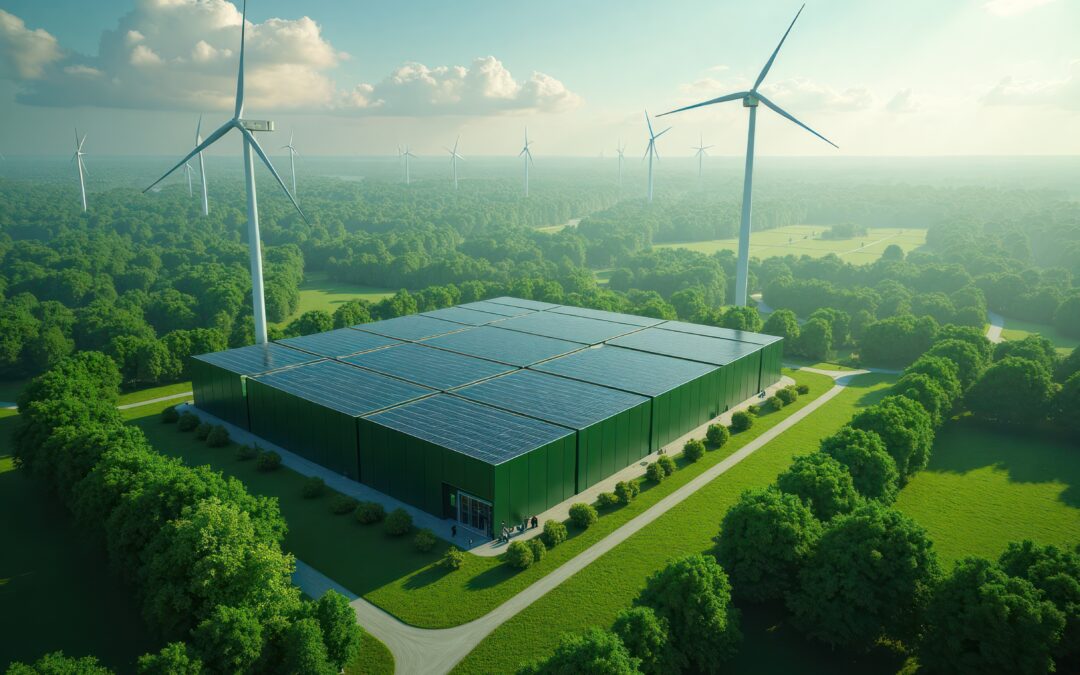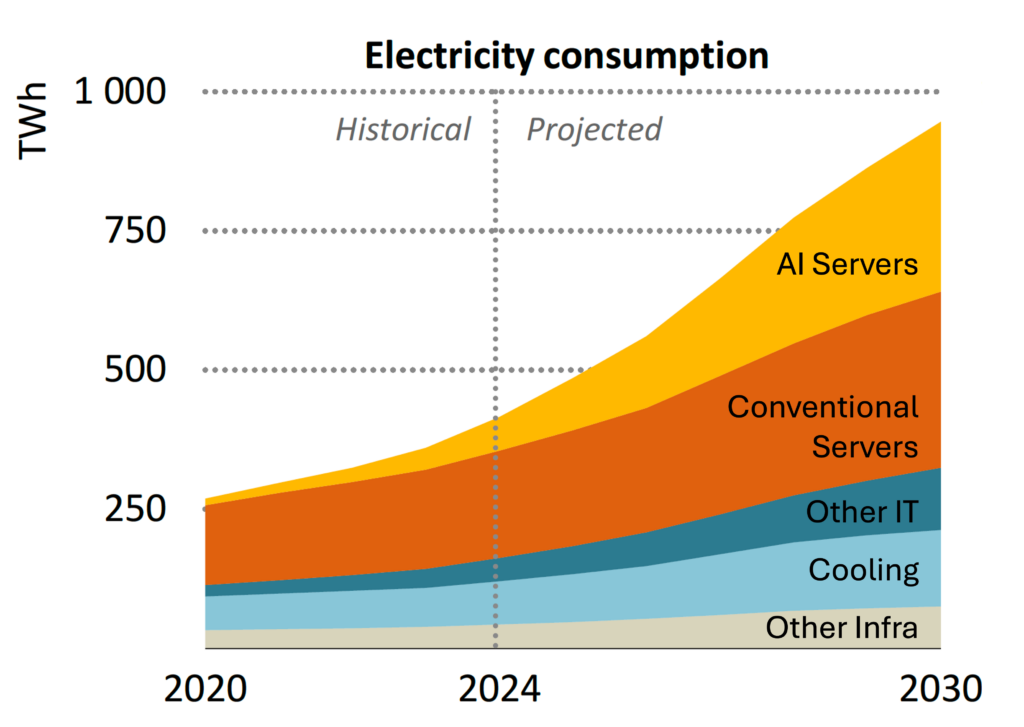There has been a lively debate on Computer Architecture Today about whether we should focus our attention on computing’s embodied carbon or operational carbon. In recent years, there has also been a lot of concern about the growth of AI and its impact on both energy consumption and the environment. So, careful carbon accounting is indeed needed to identify the factors that contribute to both embodied and operational emissions.
Unfortunately, carbon accounting in computing can also divert attention from the rapidly growing energy demands of datacenters—an issue with major implications for where they can be located due to availability of energy. Carbon offsets—a key trend in industry to reach sustainability goals among hyperscalars—obscures the growing energy demands in datacenters. In recent years, rapid growth has led to restrictions on new datacenter construction in countries like Singapore, the Netherlands, and Ireland, where electricity grids are nearing capacity. In energy-constrained countries like Germany, Europe’s economic powerhouse, it is increasingly urgent to assess energy demands and develop technologies that reduce datacenter energy consumption.
Datacenter Growth
There have been many projections about datacenter investment, growth and demand for electricity. Goldman Sachs reported earlier this year that datacenter electricity demand worldwide was at 400 TWh in 2023 with about a quarter of it spent in the US. They project a 16% increase in consumption by 2030 to over 1000 TWh (higher than the electricity needs of Japan, the fourth largest economy in the world) with roughly 20% of it from AI.
The International Energy Agency just released a report showing similar trends. The figure above (taken from that report) shows a growth of 16% in projected electricity demand until 2030 with a higher projected fraction of electricity in accelerated servers of roughly 30% by 2030. Moreover, this annual growth rate is higher than 20% in developed economies. US and China are slated to account for 80% of global energy consumption in datacenters by 2030.
Energy ≠ Emissions
Emissions from the source of electricity are highly variable with fossil fuel being at the worse end of the spectrum in emissions and coal, as an example, generating 1.24 kg CO₂/kWh. Renewables, while not a net-zero emission source of electricity (due to embodied emissions), do lower emissions by 10x-100x depending on the source.
For instance, data from European energy models show that:
- Hydro power results in about 0.012 kg CO₂/kWh
- Wind power about 0.026 kg CO₂/kWh
- Photovoltaics range from 0.091 to 0.135 kg CO₂/kWh depending on configuration
- Nuclear power about 0.023 kg CO₂/kWh
Nuclear energy, while not considered “green”, has among the lowest emissions and as such may be a great solution to lower the impact of computing. But there are technological hurdles in building conventional nuclear plants fast enough to supply the growth in energy demand.
Clearly, countries with abundant renewable energy and cooler climates are well-positioned to host datacenters. In regions like the Nordics and Canada, where most energy is low-carbon, datacenters benefit from lower emissions, reduced cooling needs, and opportunities to recover waste heat for residential use. However, even “green” electricity carries climate and social trade-offs. Increased consumption can strain power grids, raise energy prices, and may necessitate importing less clean energy during peak demand periods.
In regions where fossil fuels are abundant but ambient temperatures are high—such as the Middle East, Texas, and Malaysia—accurate accounting of datacenter energy use is essential to assess emissions. These areas are expected to see some of the fastest datacenter growth, but face challenges due to high-carbon energy sources and significant energy waste from cooling, with limited potential for heat recovery.
The AI Effect
It is difficult to say how much of the expected growth in energy demand will be offset by advances in AI. There is no question that AI is emerging as a powerful driver of scientific progress—accelerating discovery, testing, and commercialisation. But, there remains significant uncertainty about how quickly it will be adopted, how capable and productive it will become, or how much AI will help curb energy in other sectors. AI is also helping with innovation in the energy sector, with implications on emissions be it extracting fossil fuel more efficiently, funded by the energy sector, or advancing the adoption and efficiency of renewables which will depend on the will of governments to invest in renewable energy.
Conclusion – Rebalancing the Conversation
Assessing the overall emissions associated with computing is crucial. However, it is undeniable that datacenter energy consumption is growing at an exponential rate—a trend expected to continue in the coming years. This growth does not simply represent a transfer of energy use from other industrial sectors; rather, it contributes to a net increase in global energy demand. As a community, we must develop and adopt robust methodologies to rigorously evaluate energy efficiency in datacenters. Doing so will better equip stakeholders to plan for energy provisioning and make informed decisions about where and how to host datacenters most effectively. In future articles, I will discuss the need for evaluating and improving energy efficiency in datacenters.
About the author: Babak Falsafi is a Professor in the School of Computer and Communication Sciences at EPFL (epfl.ch) and the founding President of Swiss Datacenter Efficiency Association (sdea.ch).
Disclaimer: These posts are written by individual contributors to share their thoughts on the Computer Architecture Today blog for the benefit of the community. Any views or opinions represented in this blog are personal, belong solely to the blog author and do not represent those of ACM SIGARCH or its parent organization, ACM.



